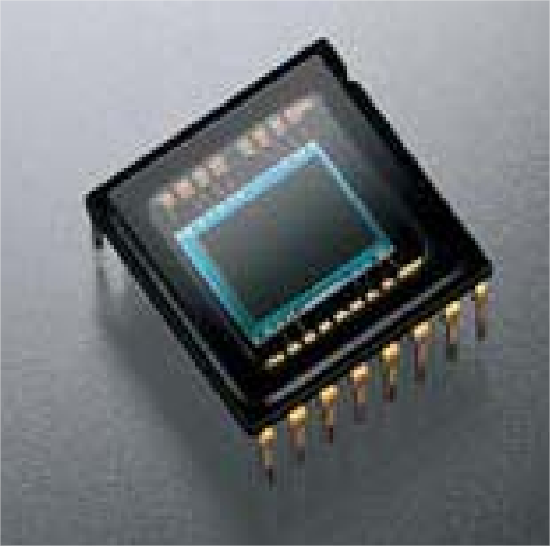1.1: What is a CCD?
- Page ID
- 151072
As you know, a film camera uses film to save an image. However, the digital camera has a sensor which is positioned behind the lens. When you press the shutter button, the sensor measures the light striking it and creates a digital image much in the same way a photocopier makes a copy of a document. This image is stored on removable storage called a memory card.

A semiconductor technology used to build light-sensitive electronic devices such as cameras and image scanners
The CCD is a collection of tiny light-sensitive diodes, which convert photons (light) into electrons (electrical charge). These diodes are called photosites. In a nutshell, photons are converted to electron by the photosite and the electron is converted to voltage. Then, these analog forms (voltage) are digitized into pixels within the supporting camera circuitry before downloading to memory.

The feature of a CCD can be described by the number of pixels and physical size. If there is a 4.0 megapixel camera, it means there are 4 million sensors in its CCD. It also means the camera can produce 4.0 megapixel-photos.
On the other hand, the size of the CCD is very important. The bigger CCD can receive a greater amount of light, so a photo will be clearer. However, the price will be higher. For example, let us compare two digital cameras. One is 4.0 megapixel and the CCD is 5.52mm x 4.14mm. The other is 3.0 megapixel and CCD is 23.7 x 15.6mm. In this case, the second camera is much more expensive because of the size of the CCD even though the first one has a higher number of pixels.
TIP How to compare CCD sizes?
When you buy a digital camera, you should look at the specifications. If a CCD size is 1/1.8 inch, it is referring the diagonal size of the CCD. Regular cameras have a 1/2.7, 1/1.8, or 2/3 inch CCD. However, high-spec cameras have a much larger CCD, and the size is described as 22.7 x 15.1mm in the specifications.


